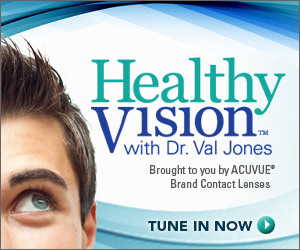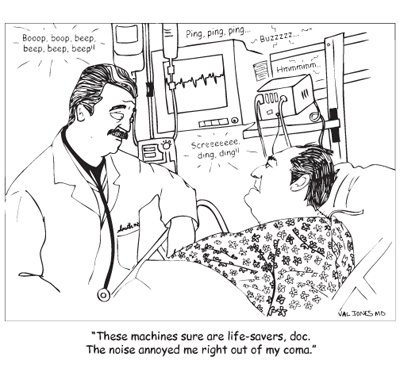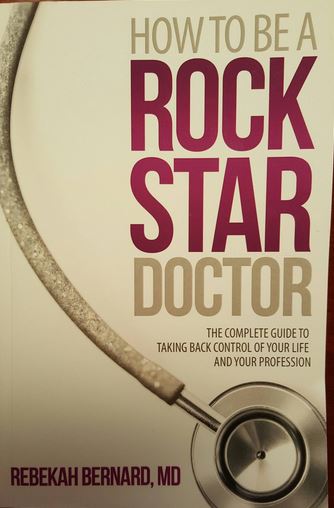April 7th, 2010 by RyanDuBosar in Better Health Network, Health Policy, News, Opinion, Primary Care Wednesdays
No Comments »

 With the prospect of 32 million new patients clamoring for care comes sorting out who will see them all. New medical schools are opening and students say they relish the idea of entering a market that will demand their services. American College of Physicians member Manoj Jain, M.D., offers a more tempered view of how the fallout might affect primary care. (AP, American Medical News, Fort Worth Star-Telegram, Memphis Commercial Appeal)
With the prospect of 32 million new patients clamoring for care comes sorting out who will see them all. New medical schools are opening and students say they relish the idea of entering a market that will demand their services. American College of Physicians member Manoj Jain, M.D., offers a more tempered view of how the fallout might affect primary care. (AP, American Medical News, Fort Worth Star-Telegram, Memphis Commercial Appeal)
Even Hawaii has a shortage, especially in primary care, but also cardiology and orthopedic surgery. It’s hard to believe recruiters couldn’t sell Hawaii as a destination. (Honolulu Advertiser)

*This blog post was originally published at ACP Internist*
April 7th, 2010 by DrRob in Better Health Network, Opinion, Primary Care Wednesdays, True Stories
No Comments »

If there is a central theme to this blog, it is this: Medicine is a human thing.
On the Facebook page of my podcast, I recently asked for readers to tell me some of the “war stories” they have from the doctor’s office. What are some of the bad things doctors do wrong? I quickly followed this with the flip side, asking readers to comment on the best interactions that they’ve had with their doctors.
The response was overwhelming, and equally quick to both rant and rave. They told stories about doctors who didn’t listen, explain, or even talk with them. They told about arrogance and disconnectedness from the people from whom they were seeking help. They also told about doctors who took extra effort to listen and to reach out in communication. They talked about doctors who genuinely seemed to value them as humans. Read more »
*This blog post was originally published at Musings of a Distractible Mind*
April 7th, 2010 by Bryan Vartabedian, M.D. in Better Health Network, Book Reviews, Health Policy, Opinion, Primary Care Wednesdays
No Comments »

 I just finished Seth Godin’s Linchpin. Seth makes the case that in a hypercompetitive world the stakes are higher than ever to make an indispensible contribution to something you care about. The linchpin is the essential element, the piece of a wheel or organization that is absolutely irreplaceable.
I just finished Seth Godin’s Linchpin. Seth makes the case that in a hypercompetitive world the stakes are higher than ever to make an indispensible contribution to something you care about. The linchpin is the essential element, the piece of a wheel or organization that is absolutely irreplaceable.
Seth references business, but he might as well have been talking about obstetricians or internists. We need more linchpin doctors.
Modern patient care is progressively marginalizing physicians. Care that is increasingly “managed” and dependent upon automated diagnostics is leaving physicians as powerless cogs in a system of mechanical patient care. Patients have become naturally detached as they search for solutions of their own.
Physicians have to be remarkable to remain relevant. Physicians have to offer something not available anywhere else. Physicians need to make a difference and in their own way and serve as real leaders and innovators in their relationships with patients and their communities. Physicians have to be linchpins. Read more »
*This blog post was originally published at 33 Charts*
April 7th, 2010 by AlanDappenMD in Better Health Network, Opinion, Primary Care Wednesdays, True Stories
No Comments »
In my medical practice, I have a simple yet revolutionary idea: I get paid to answer the phone. Every one of my 3,000+ patients has my cell phone and email address so that they can reach me the instant they need help, which is no different than any of my friends or family who may be trying to reach me. Our practice motto: “Talk to your doctor anytime, anyway, anywhere.”
It’s not that I’m trying to not see you, or want to be impersonal or to practice risky healthcare. In fact, each of these common assumptions is pointedly wrong. By answering my phone, I can know my diagnosis and treatment worked (or not), or I can help someone avoid an ER visit or unnecessary office visit. My patients call me when they’re traveling, or at work, or from their car, at night and on weekends. There’ve been occasions that I need to see a patient NOW and I’ve come to the office a 2AM to keep someone out of an ER. No matter what, by picking up the phone to talk to my patients, I’m the first person in the healthcare system to know something is wrong, not the last.
Although good examples supporting the power of a doctor answering a phone occur daily, I have one I want to share with you. Read more »
April 6th, 2010 by Berci in Better Health Network, News, Research
No Comments »

This is the era of evidence-based social media as more and more papers focusing on medicine and social media are coming out. An interesting paper was published a few days ago in the American Journal of Infection Control. Scanfeld et al. tried to reveal the rate of misunderstanding or misuse of antibiotics in Twitter messages in their study: Dissemination of health information through social networks: Twitter and antibiotics.
BACKGROUND: This study reviewed Twitter status updates mentioning “antibiotic(s)” to determine overarching categories and explore evidence of misunderstanding or misuse of antibiotics.
METHODS: One thousand Twitter status updates mentioning antibiotic(s) were randomly selected for content analysis and categorization. To explore cases of potential misunderstanding or misuse, these status updates were mined for co-occurrence of the following terms: “cold + antibiotic(s),” “extra + antibiotic(s),” “flu + antibiotic(s),” “leftover + antibiotic(s),” and “share + antibiotic(s)” and reviewed to confirm evidence of misuse or misunderstanding.
RESULTS: Of the 1000 status updates, 971 were categorized into 11 groups. Cases of misunderstanding or abuse were identified for the following combinations: “flu + antibiotic(s)” (n = 345), “cold + antibiotic(s)” (n = 302), “leftover + antibiotic(s)” (n = 23), “share + antibiotic(s)” (n = 10), and “extra + antibiotic(s)” (n = 7).
CONCLUSION: Social media sites offer means of health information sharing. Further study is warranted to explore how such networks may provide a venue to identify misuse or misunderstanding of antibiotics, promote positive behavior change, disseminate valid information, and explore how such tools can be used to gather real-time health data. 




*This blog post was originally published at ScienceRoll*
 With the prospect of 32 million new patients clamoring for care comes sorting out who will see them all. New medical schools are opening and students say they relish the idea of entering a market that will demand their services. American College of Physicians member Manoj Jain, M.D., offers a more tempered view of how the fallout might affect primary care. (AP, American Medical News, Fort Worth Star-Telegram, Memphis Commercial Appeal)
With the prospect of 32 million new patients clamoring for care comes sorting out who will see them all. New medical schools are opening and students say they relish the idea of entering a market that will demand their services. American College of Physicians member Manoj Jain, M.D., offers a more tempered view of how the fallout might affect primary care. (AP, American Medical News, Fort Worth Star-Telegram, Memphis Commercial Appeal)














